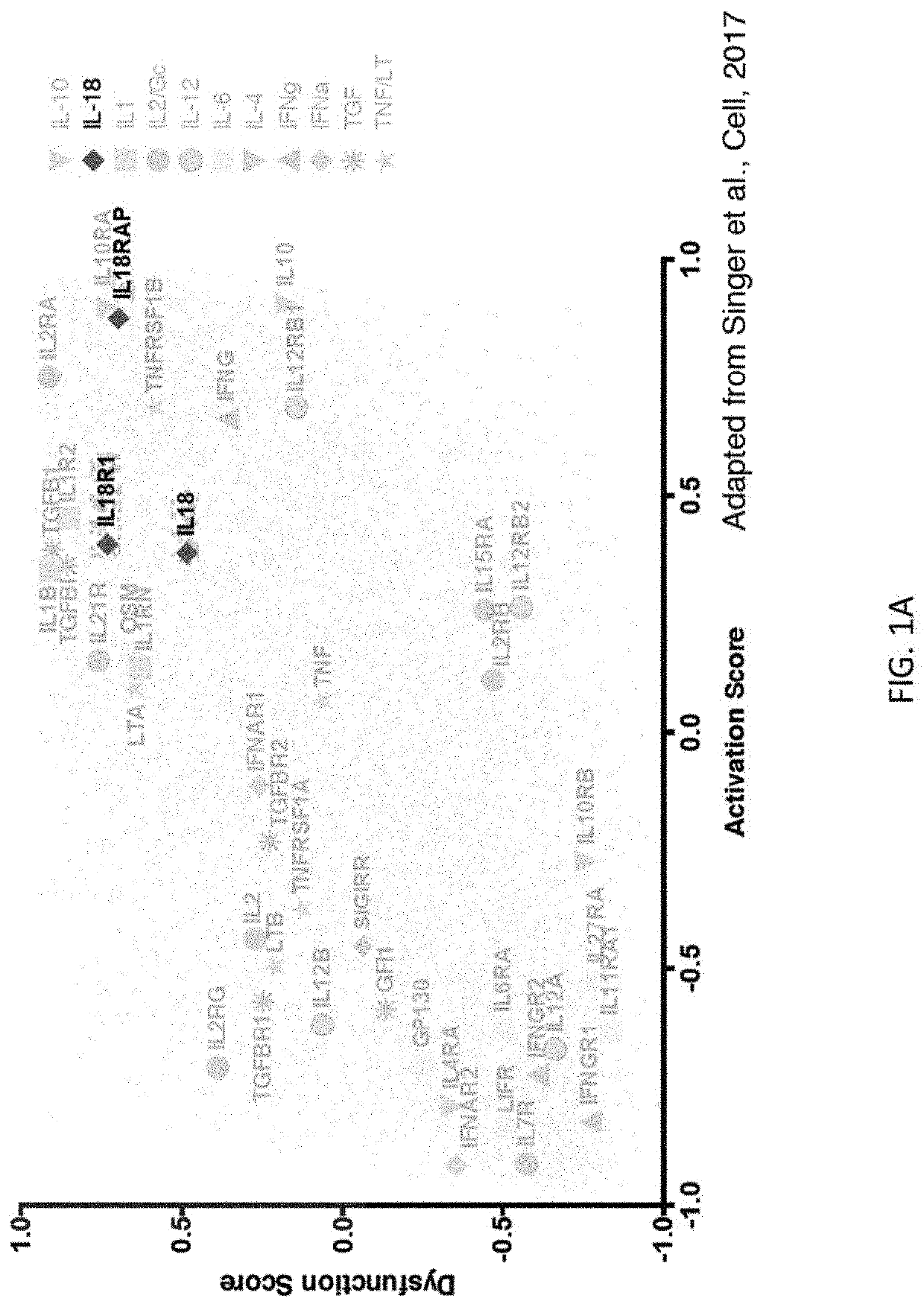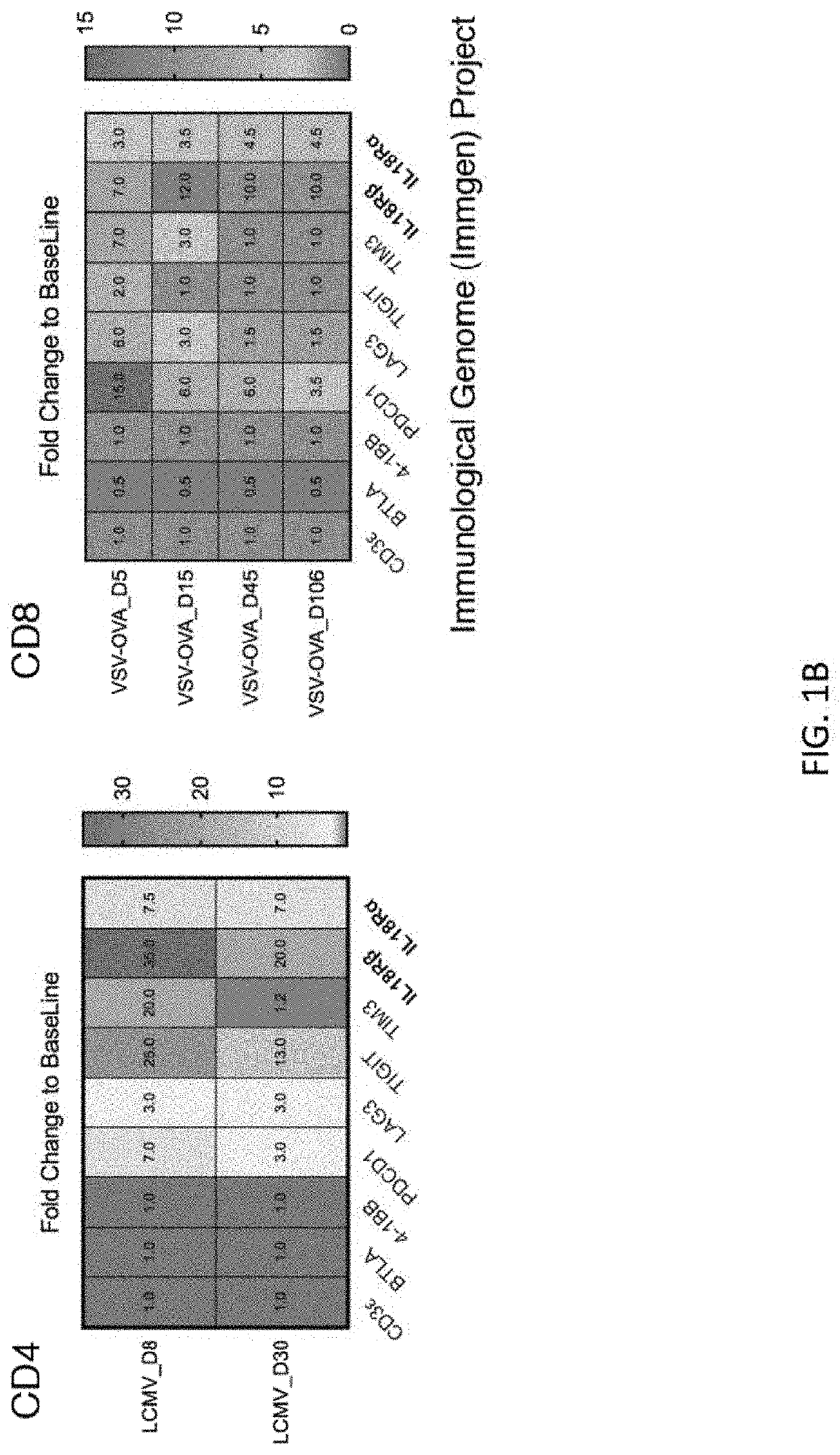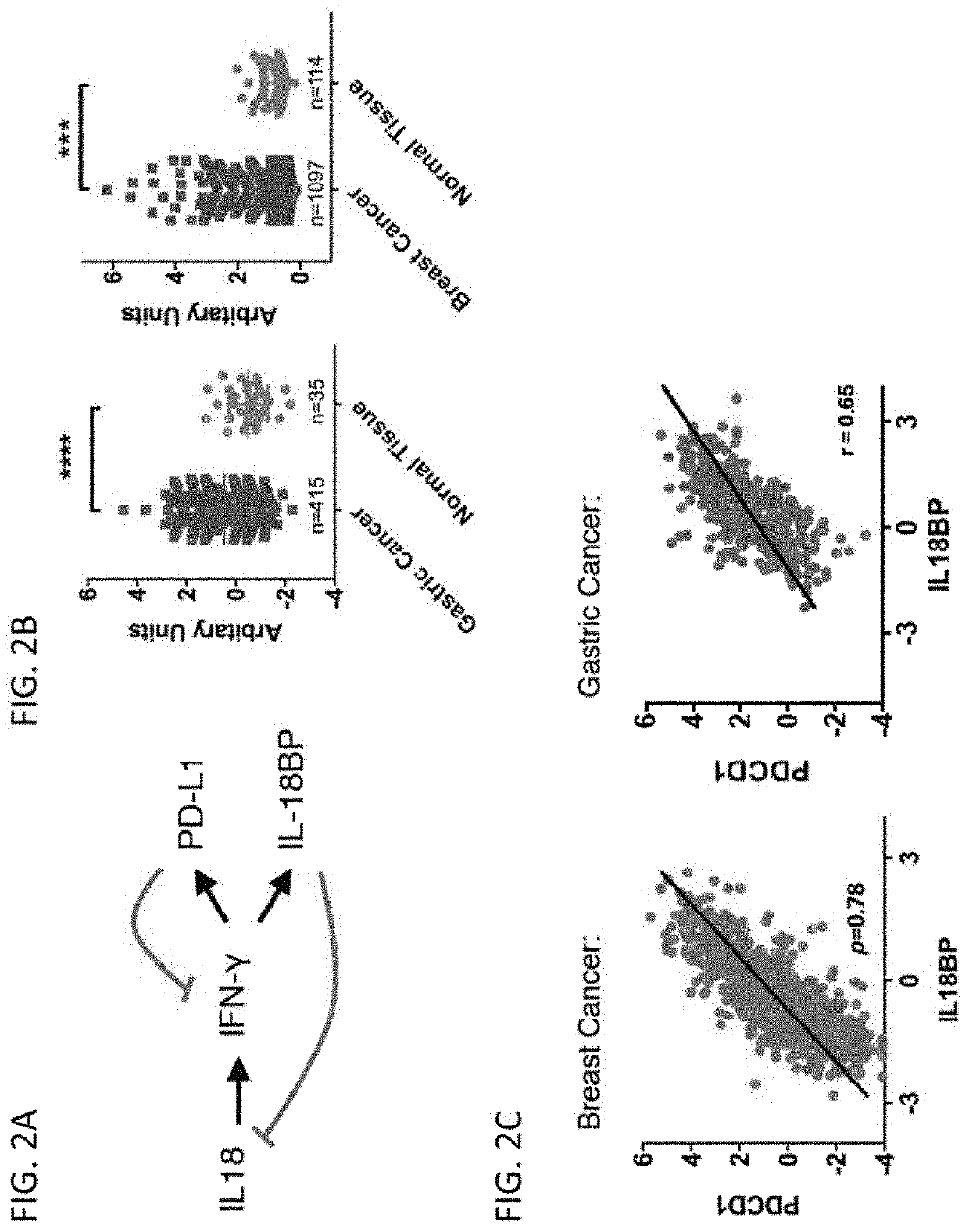Interleukin-18 mimics and methods of use
a technology of interleukin-18 and mimics, which is applied in the field of interleukin-18 mimics and methods of use, can solve the problems of limited clinical efficacy of il-18, and achieve the effect of increasing the number and/or activity of immune cells and increasing immune system activity
- Summary
- Abstract
- Description
- Claims
- Application Information
AI Technical Summary
Benefits of technology
Problems solved by technology
Method used
Image
Examples
example 1
IL-18 Variant Polypeptides
[0282]IL-18 is a pro-inflammatory cytokine that can stimulate T, NK, and myeloid cells. It has been proposed as an immunotherapeutic agent for cancer given its ability to stimulate anti-tumor immune cells. As demonstrated herein, the therapeutic efficacy of recombinant IL-18 treatment is greatly limited by upregulation of its natural endogenous soluble inhibitor IL-18BP. The present disclosure is based, in part, on the development of variants of both human and mouse IL-18 that are almost entirely independent of IL-18BP. The cytokine variants exhibit altered relative preference for the receptors (IL-18Rα and IL-18BP) by hundreds of thousands to over a million-fold. These variants have potent anti-tumor activity in preclinical tumor models, both as monotherapies and in combination with immune checkpoint inhibitors such as anti-PD-1. As an additional application, IL-18 also has a well-established anti-obesity role and it is demonstrated herein that administrat...
example 2
Binding Affinity Measurements of Second Generation Variants
[0327]Surface Plasmon Resonance (SPR) was used to perform biophysical affinity measurements of second generation DR-IL-1 8 variants (binding to IL-18R vs IL-18BP). See FIG. 24 for the generated sensorgrams. Table 10 is a summary of the measured kinetics, Table 11 is a summary of the affinity measurements, and Table 12 is a general summary, including results for the dissociation constant ratios of the second generation DR-IL-18 variants.
TABLE 10Summary of SPR data for second generationhDR-IL-18 variants (kinetics)SurfaceAna-kakdKD (M)KD (M)%Ligandlyte(1 / Ms)(1 / s)Exp 2Exp 1RmaxhIL-18RahIL-5.55E+052.97E−035.36E−095.35E−093218hIL-18Ra6-124.95E+059.10E−041.84E−092.24E−0935hIL-18Ra6-276.31E+052.43E−033.85E−093.48E−0935hIL-18Ra6-295.75E+051.19E−032.07E−092.65E−0936hIL-18Ra6-312.18E+053.32E−031.52E−081.94E−0819hIL-18BPhIL-5.18E+052.23E−074.30E−136.94E−134818hIL-18BP6-12Too weak to measure−1hIL-18BP6-27Too weak to measure2hIL-18BP6-29...
example 3
[0328]Efficacy of DR-IL-18 variants was tested using multiple different cancer models, including models of colorectal tumors, breast cancer, melanoma, and WIC class I deficient tumors that are resistant to immune checkpoint inhibitors. The results show that DR-IL-18 variants with a bias to bind FL-18R and not IL-i8BP can be used to treat a broad range of cancers (not limited to just those that were tested).
[0329]FIG. 25A and 25B: data demonstrating efficacy of DR-IL-18 on the CT26 colorectal tumor model. 250,000 CT26 cells were implanted subcutaneously and treatment initiated at day 7 once tumors were ˜60 mm3 on average. WT IL-18 and mCS2 were dosed at 0.32 mg / kg twice weekly for a total of 5 doses. Anti-PD1 was given at 10mg / kg at the same schedule: (A) Overlay of spider plots showing tumor growth of saline (PBS) treated animals in black lines (circles), WT IL-18 in blue lines (squares), and DR-IL-18 (mCS2) in pink (triangles). Only treatment with DR-IL...
PUM
| Property | Measurement | Unit |
|---|---|---|
| secondary structure | aaaaa | aaaaa |
| flexible | aaaaa | aaaaa |
Abstract
Description
Claims
Application Information
 Login to View More
Login to View More - R&D
- Intellectual Property
- Life Sciences
- Materials
- Tech Scout
- Unparalleled Data Quality
- Higher Quality Content
- 60% Fewer Hallucinations
Browse by: Latest US Patents, China's latest patents, Technical Efficacy Thesaurus, Application Domain, Technology Topic, Popular Technical Reports.
© 2025 PatSnap. All rights reserved.Legal|Privacy policy|Modern Slavery Act Transparency Statement|Sitemap|About US| Contact US: help@patsnap.com



